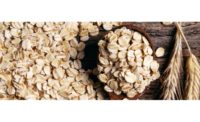For members of the gluten-free community, trust in their favorite products is of paramount importance. Because even miniscule amounts of gluten can cause serious health problems for people with celiac disease, transparency in food labeling is especially critical. Food labels with gluten-free marks and certification logos function as a kind of shorthand, inspiring confidence that these products meet thresholds established by the FDA or individual certifying organizations.
With the best of intentions, manufacturers sometimes employ labeling practices that cause confusion for consumers of gluten-free products. The recent release of temporary guidance from the FDA is another source of concern for members of the gluten-free community. Intended to address supply chain disruptions during the COVID-19 pandemic, this guidance allows manufacturers to make minor changes in packaged food ingredients without updating ingredient lists.
The FDA has clarified that manufacturers should only make changes when the substituted ingredient does “not cause any adverse health effect” and refers to gluten as an example of a hazard that should be avoided. However, the language of the guidance is advisory rather than mandatory, introducing the potential for manufacturers to inadvertently substitute gluten-containing ingredients that would not be indicated in the product’s ingredient list. Moreover, while the guidance is intended to be temporary, the FDA has not specified the duration or indicated an end date for the guidance.
Inaccurate or incomplete ingredient lists are obviously an issue for foods labeled as gluten-free, but they can also create problems with foods that are inherently gluten-free, even when those products aren’t marketed as such. Consumers often rely on ingredient lists to identify foods that don’t contain any wheat, barley, or rye. If manufacturers make substitutions without updating ingredient lists, consumers may lose trust in brands they have relied on for years and stop buying a once-favored product.
Failing to recognize ingredients that contain gluten is another potential source of concern. Malt ingredients are common, and are primarily derived from barley, a gluten-containing grain. Because the FDA does not require manufacturers to list the barley source ingredient on food labels, people may buy items containing malt without realizing that they contain gluten.
A good practice for providing clarity is to list the main ingredient and include the gluten-containing source ingredient in parentheses. While many manufacturers already adopt this practice, companies should be especially vigilant while the FDA’s temporary guidance is in effect. As a rule, avoid using these ingredients as substitutions for gluten-free products:
- Malt (barley, unless another source is named)
- Malt extract (barley, unless another source is named)
- Malt syrup (barley, unless another source is named)
- Malt vinegar (barley, unless another source is named)
- Beer (contains malt unless it’s labeled as gluten-free)
- Spent brewer’s yeast (by-product of beer brewing)
- Yeast extract (might be spent brewer’s yeast)
- Dry smoke flavoring (might use barley malt flour as a carrier)
- Soy sauce (if wheat is listed as a sub-ingredient OR if a sub-ingredient list isn’t listed)
- Single ingredient oats/oat flour that is not labeled gluten-free
If you do use these ingredients as substitutions, be sure to update your ingredient list accordingly. Manufacturers should not use any of these as substitutes for gluten-free ingredients if they will be using the FDA’s guidance on COVID-19 related ingredient substitutions.
Labels that include “may contain wheat” statements or allude to shared equipment can also raise questions. Because wheat contains several proteins that trigger allergies, manufacturers include these statements even when products contain less gluten than the FDA standard of 20 parts per million (ppm). When these statements appear on products marketed as gluten-free, it can raise red flags and erodes consumer trust in the integrity of gluten-free marks and logos.
Gluten-free marks can create additional confusion by giving consumers the impression that products are certified as gluten-free when they’re not. Labels that declare a product “gluten-friendly” or “grain-free” can be equally problematic. Manufacturers use these terms to indicate that they have not intentionally included any gluten in their products, but these terms don’t provide any assurance that manufacturers have taken steps to prevent cross-contamination in addition to using gluten-free ingredients. Manufacturers can avoid these issues by ensuring their gluten-free marks are distinct from certification logos and avoiding the use of imprecise terms like “grain-free” or “gluten-friendly.”
Certification is one of the best ways to validate that gluten-free products meet the FDA’s 20 ppm threshold and some certifications have even more stringent standards. For example, the GFCO certification requires products to contain less than 10 ppm of gluten. The GFCO certification also prohibits making ingredient substitutions without review and approval by the certifying organization and requires manufacturers to test samples to ensure they fall below the 10 ppm threshold.
While testing can provide assurance that products meet FDA and certification standards, manufacturers should be aware that fermented and hydrolyzed products can interfere with the accuracy of gluten test kits. In such cases, manufacturers may label a product as gluten-free, unaware that the presence of a fermented or hydrolyzed ingredient has skewed the test results.
With the COVID-19 pandemic disrupting supply chains and the recent FDA guidance, transparency in labeling is more important than ever. Voluntarily declaring the presence of barley and rye, certifying products as gluten-free, and providing more information online about product ingredients can go a long way in reassuring consumers that you prioritize their health and dietary needs, inspire trust among consumers, and earn lasting loyalty from the gluten-free community.




